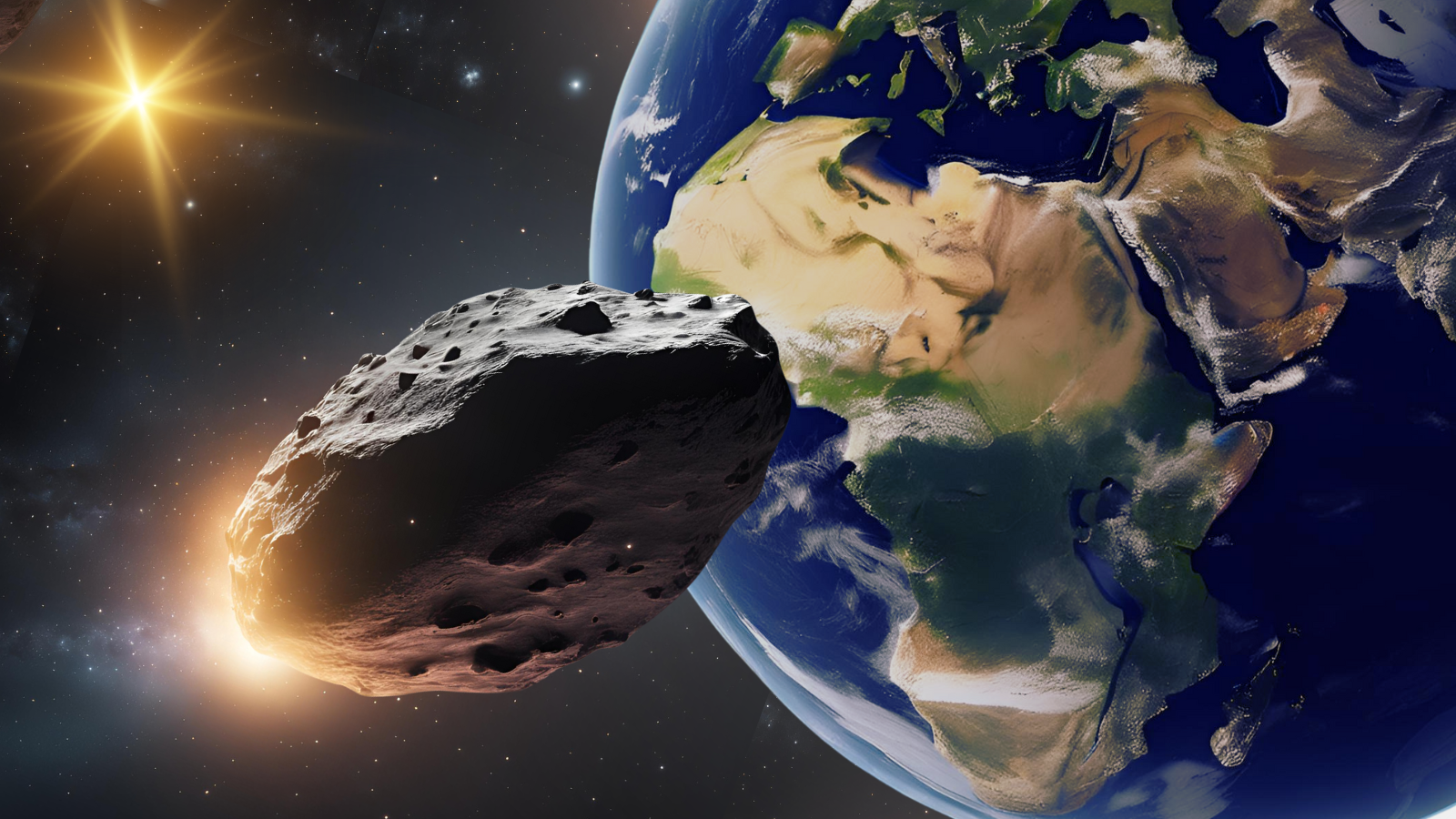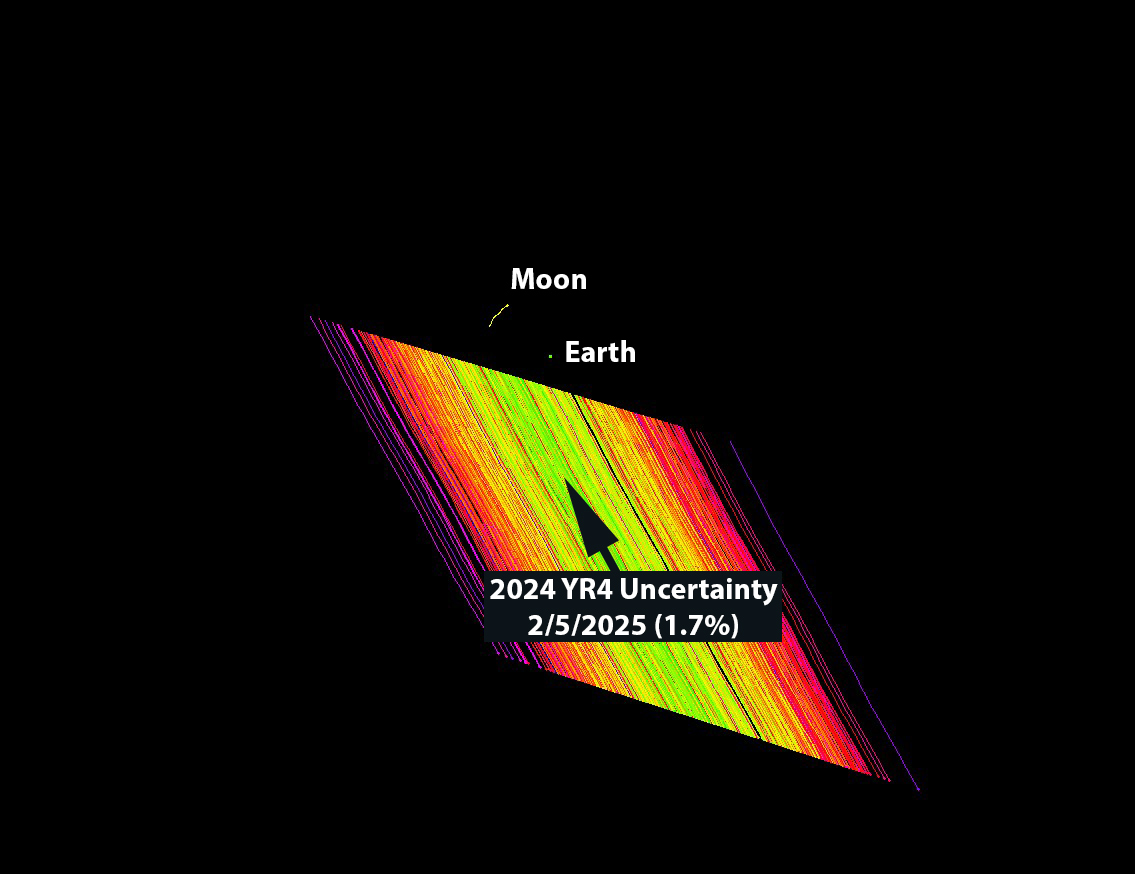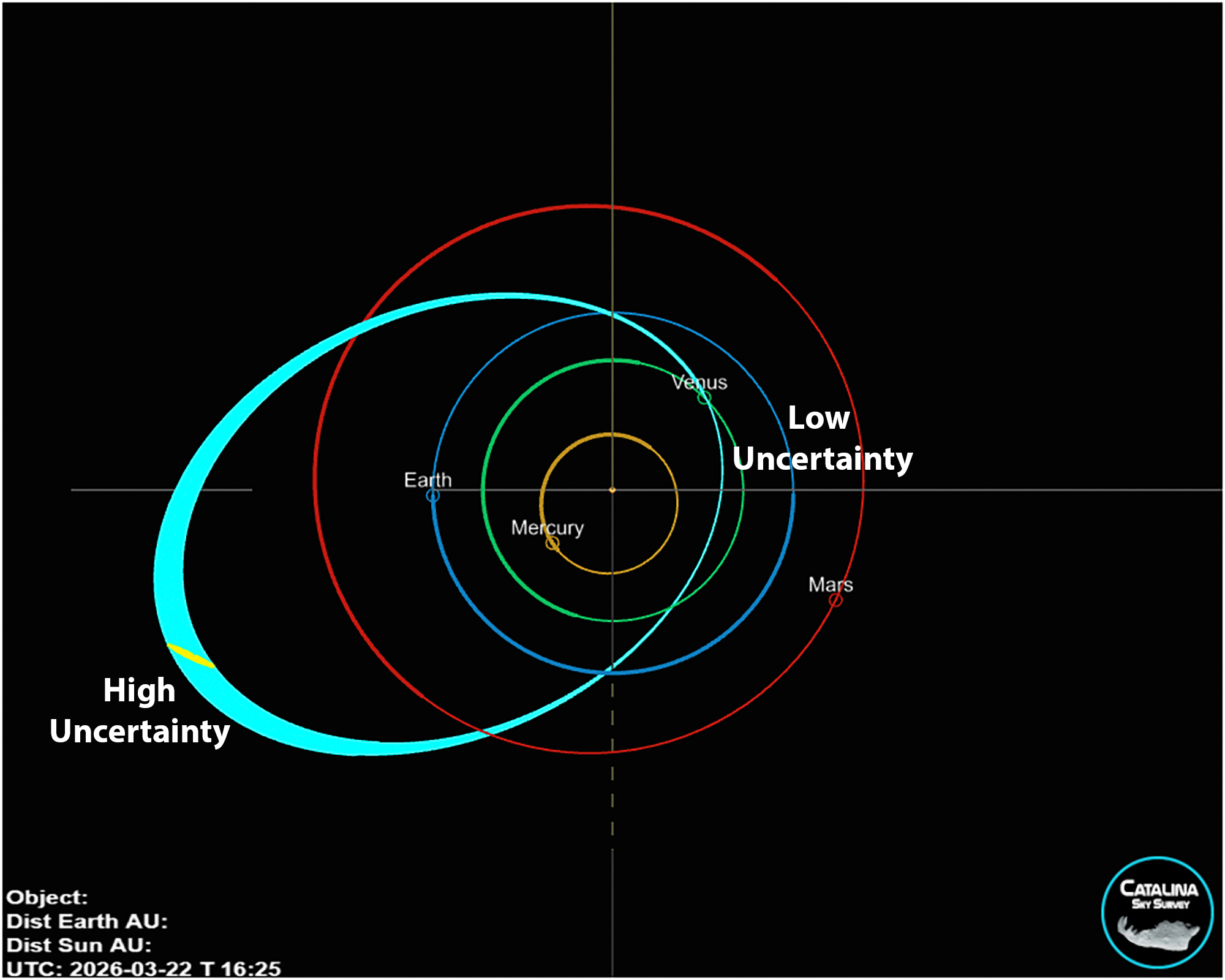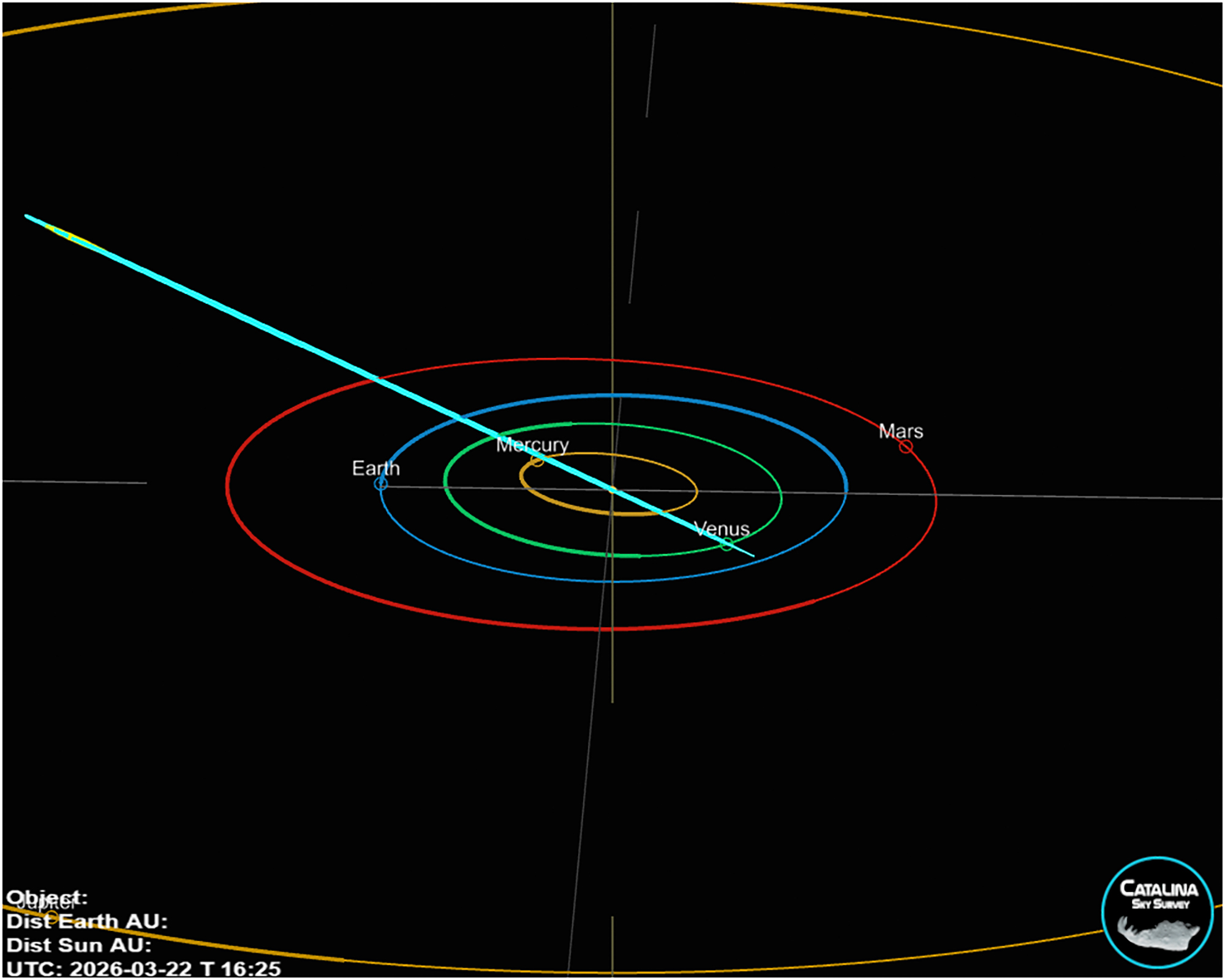Odds of an asteroid impact in 2032 just went up. Here's why experts say you shouldn't worry
"We are still at 97.7% chance of a miss from this asteroid."

The odds of the asteroid 2024 YR4 impacting Earth in 2032 have increased to 1 in 43. Despite this, you still shouldn't worry about the potential impact of this asteroid.
That's because experts expected the impact probability of this asteroid, which sits at the top of the Center for Near Earth Object Studies Sentry asteroid risk list, to increase. They also expect the chance of an impact to fall dramatically in the near future when we know more about its orbit.
Asteroid hunter David Rankin first "precovered" (short for pre-discovery recovery) asteroid 2024 YR4 in data from the Catalina Sky Survey, meaning he was able to find images of the space rock in archival data that was gathered prior to its official discovery. Space.com reached out to Rankin to explain why the changing odds are all part of the journey to better understand this asteroid.
When Space.com first reported on 2024 YR4, the odds of it impacting Earth when it passes our planet in 7 years were just 1 in 83, so it might seem like the chances of a strike have almost doubled — but there is another way to present those numbers.
A 1-in-83 chance of an impact represented a 1.2% chance of an impact. That meant there was a 98.8% that 2024 YR4 would miss Earth. The new figure of 1-in-43 represents a 2.3% chance of a strike.
"That means we are still at 97.7% chance of a miss from this asteroid," Rankin told Space.com.
As you can see, the odds of 2024 YR4 hitting Earth in 2032 may have almost doubled, but that doesn't mean the chance of it missing Earth has halved!
What is more, Rankin, who has been tracking 2024 YR4 since its discovery in Dec. 2024, isn't surprised that the chance of this asteroid, currently estimated to be 196-foot-wide (60-meter-wide), hitting Earth has increased.
In fact, he had already warned Space.com that this was bound to happen. However, the asteroid hunter said these odds are also certain to fall again.
Get the Space.com Newsletter
Breaking space news, the latest updates on rocket launches, skywatching events and more!
"We still expect that to start falling at some point. People should absolutely not worry about this yet," Rankin said.
The asteroid hunter went further, explaining why such uncertainties arise.
Why are we uncertain about 2024 YR4's impact possibility?
Rankin explained that with newly discovered asteroids like 2024 YR4, certain characteristics of their orbit are initially confirmed to a much higher degree than others.
"We end up with a good understanding of the plane in space that the asteroid is orbiting on, but not exactly where along that plane it will be," Rankin said. "This manifests with uncertainty along a confined line, called the line of variation."
For 2024 YR4, the center of that distribution passes close to the Earth. So with every update, Rankin said, the uncertainty changes. This has the effect of slightly increasing the odds that it will hit the Earth, even though the most likely outcome remains a miss.
An image from Rankin shows the possible orbits along that line that 2024 YR4 could be in as of Feb. 5, 2025:

Rankin explained how this uncertainty arises with an analogy.
"Imagine holding a stick that is a few feet long. If you move the stick in your hand a fraction of an inch, you hardly notice any movement on the other end," the researcher said. "Now imagine that stick is many millions of miles long. Moving your hand a fraction of an inch will cause dramatic changes on the other end."
Rankin explained that in the case of this asteroid, the "fraction of an inch" movement is the tiny uncertainties in the positional measurements of the asteroid from the telescope's images that can arise from small timing errors and minor positional errors.
"It's not possible to get a 'perfect' measurement of the asteroid from any telescope," he continued. "So all we can do then is plot all of the possible orbits that fit the given observational arc at any time. This ends up producing a normal distribution of orbits that are all possible.
"The uncertainty of that distribution will change as more observations are made, and the arc is extended."
Rankin demonstrates this with the two graphics below, which show the orbital path of a different newly discovered asteroid designated 2025 B09:

Rankin explained that a lot of the uncertainty along the line of variation comes from the fact that it is difficult to confine the aphelion distance (the distance at which an object is at its furthest from the sun) for a newly confirmed asteroid.
Below is the orbit of 2025 B09 again, but viewed "edge on" in relation to the plane the asteroid orbits on.

"So the plane the asteroid is on is pretty well understood, but the position along that plane is not," Rankin said. "A general rule is that asteroids which have only a single apparition of observations, usually just a few months of their arc, have high uncertainty."
2024 YR4 is currently outbound, heading away from Earth, meaning it is difficult to observe. Rankin and colleagues will continue to track this space rock throughout February 2025 with 8-meter telescopes at the Catalina Sky Survey.
"When you can extend that to a new apparition after it's gone around the sun again, or using archival data, the uncertainty drops dramatically," Rankin said.
Additionally, teams of scientists around the globe are scanning archival data from 2016, when the asteroid was last visible to us.
"If one of them finds it, it will either 'rule in' or 'rule out' the impact in 2032," Rankin said. "Failing this, and even if after February we do not know for sure if 2024 YR4 will hit or miss in 2032, we should be able to determine that better by 2028, when it should be visible again."
Join our Space Forums to keep talking space on the latest missions, night sky and more! And if you have a news tip, correction or comment, let us know at: community@space.com.

Robert Lea is a science journalist in the U.K. whose articles have been published in Physics World, New Scientist, Astronomy Magazine, All About Space, Newsweek and ZME Science. He also writes about science communication for Elsevier and the European Journal of Physics. Rob holds a bachelor of science degree in physics and astronomy from the U.K.’s Open University. Follow him on Twitter @sciencef1rst.
-
coldish Reply
I have not really cared what "the experts" think for years anyway.Admin said:The chances of the asteroid 2024 YR4 hitting Earth in 2032 appear to have doubled, but an asteroid hunter explains to Space.com why this isn't cause for concern.
Odds of an asteroid impact in 2032 just went up. Here's why experts say you shouldn't worry : Read more -
billslugg Yes, it could be diverted rather easily. A single launch of a Falcon 9 could carry the needed three ton mass. It could be launched at the next close pass, 4 years from now, reach it in as little as 10 days, hit it, and then 4 more years would allow it to move enough to miss Earth. The problem is it would need to be funded now so it could be prepared and launched in 2028. However, we won't know until 2028 if it is going to hit Earth in the 2032 passage.Reply -
Unclear Engineer Reply
Maybe we will know more soon enough. See https://www.livescience.com/space/asteroids/in-emergency-decision-james-webb-telescope-will-study-city-killer-asteroid-2024-yr4-before-its-close-approach-to-earth .billslugg said:However, we won't know until 2028 if it is going to hit Earth in the 2032 passage.
